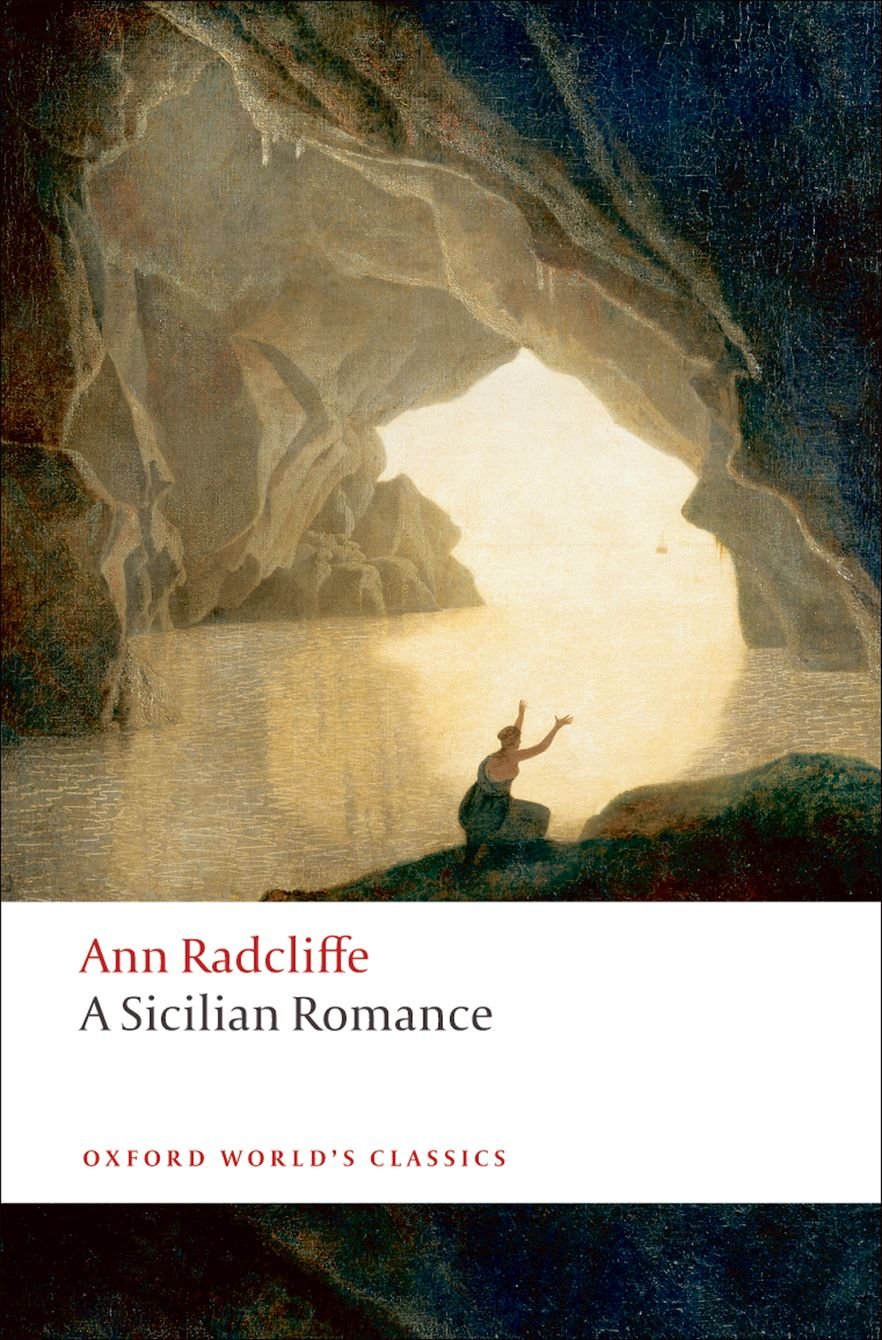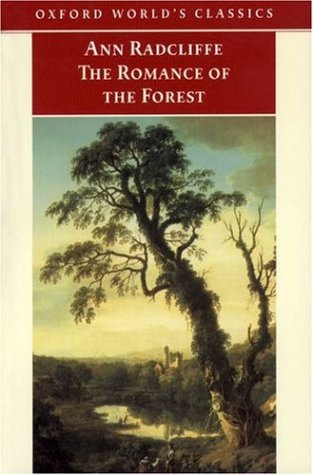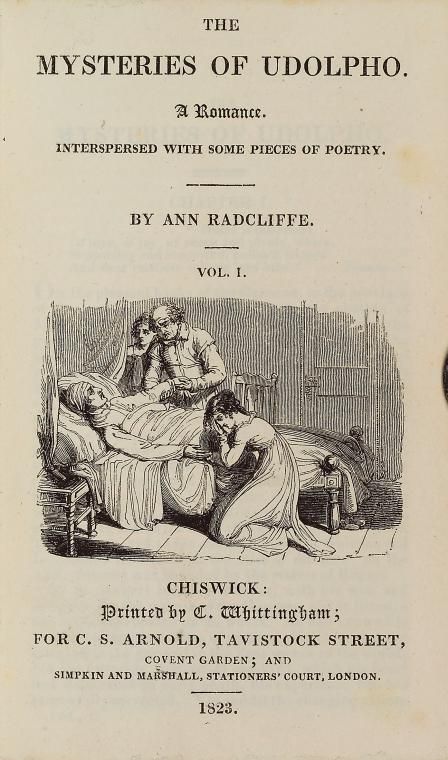Called by her peers “the Shakespeare of romance-writers”, Ann Radcliffe invented the genre of sensation-fiction
the most popular writer of her generation
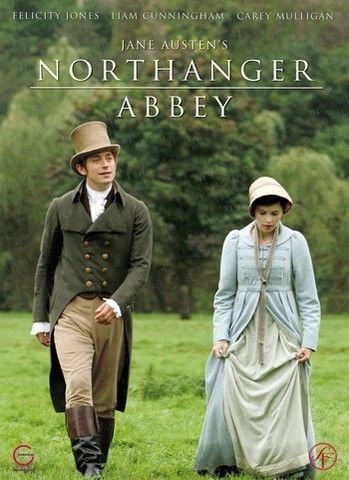
In Jane Austen’s Northanger Abbey, Catherine Morland appears as some naive heroine with little understanding of the world. She spends her free time reading, her preference going to Gothic fiction, an extremely popular genre in the early 19th century. In fact, Austen mocks Horace Walpole, author of The Castle of Otranto (1764) who initiated this type of narrative. Yet Austen directs most of her criticism at Ann Radcliffe. Published in 1794, The Mysteries of Udolpho became a literary hit for young girls from the gentry, eager to experience chills and thrills. Referred to as sensation fiction, Ann Radcliffe’s plots border between melodramatic events and fantastic effets.
Ann Radcliffe’s career was brief and few information about her private life remain. Pre-Raphaelite poet Christina Rossetti (1830-1894) attempted to write her biography but abandoned the project for lack of data. As a result, the “mighty enchantress” was the subject of many rumours. It’s been said that because of her excessive imagination, she’d been sent to an asylum. People believed she’d eat bloody pork chops before going to bed so that her nightmares would be more vivid. Ann Radcliffe entertained this celebrity status: she seldom left the quietness of her bedroom, where she could write at leisure. “She never appeared in public, nor mingled in private society” said her obituary in The Edibunburgh Review.
genesis
Ann Ward was born in Holborn, London. Her father used to be a china manufacturer. In 1787, she got married to journalist William Radcliffe, the editor-in-chief of The English Chronicle. Ann started to write a little after the wedding since her husband would often come back home late at night. The money she earned following her successful publications enabled the couple to travel to Europe. This inspired her for her sublime descriptions of sceneries.
All in all, Ann Radcliffe wrote less than ten novels, enjoying many reprints: The Castles of Athlin and Dunbayne (1789), A Sicilian Romance and The Romance of the Forest (1790), The Mysteries of Udolpho, The Italian (1797), Gaston de Blondeville (1826). She transformed Gothic Horror by adding a touch of romance to it, a trait she was lampooned for. This is precisely what Jane Austen parodied.
suspense
Unlike Walpole’s use of the omniscient narrator, Radcliffe focusses on innocent heroines persecuted by frightful counts inhabiting gloomy mansions. Action is perceived through the female viewpoint of the main character. The reader unfolds the plot at the same pace as hers.
Radcliffe’s narratives priviledge intense emotions. Most of the supernaural, unresolved elements of the storyline find some rational elucidation at the end. These can be explained by the heroine’s sensibility, her delusions or mere chance. This literary device led Radcliffe to warn her readership about the dangers of immoderate imagination.
She wished to establish Gothic fiction as a respectable genre; expressing her distate for the direction it had taken with Matthew Gregory Lewis’ Monk (1796). This novel was renown for its extreme violence, subversive themes (murder, rape, incest), that the author justified through the characters’ passions only. Radcliffe sought to achieve a sense of terror, rather than horror, in her novels.
influences
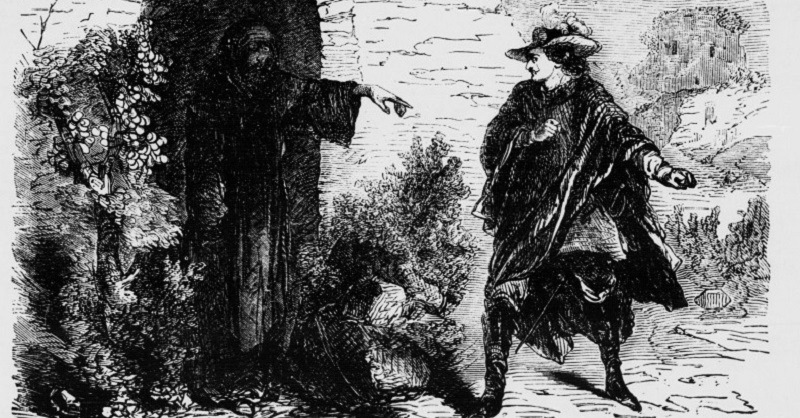
Racliffe’s favourite motifs were: ruins, unrequited love, the triomph of reason. Her descriptions of picturesque landscapes were also noticed by her contemporaries. These were inspired by the paintings of Claude Lorrain and Salvator Rosa. The pictures of these artists reproduced in engravings were decisive to built up her plots’ surroundings, taking place in France or Italy.
Ann Radcliffe used to compare Claude’s works to poetry-writing: “Here was the poet, as well as the painter, touching the imagination, and making you see more than the picture contained. You saw the real light of the sun, you breathed the air of the country, you felt all the circumstances of a luxurious climate on the most serene and beautiful landscape; and the mind thus softened, you almost fancied you heard Italian music in the air”.
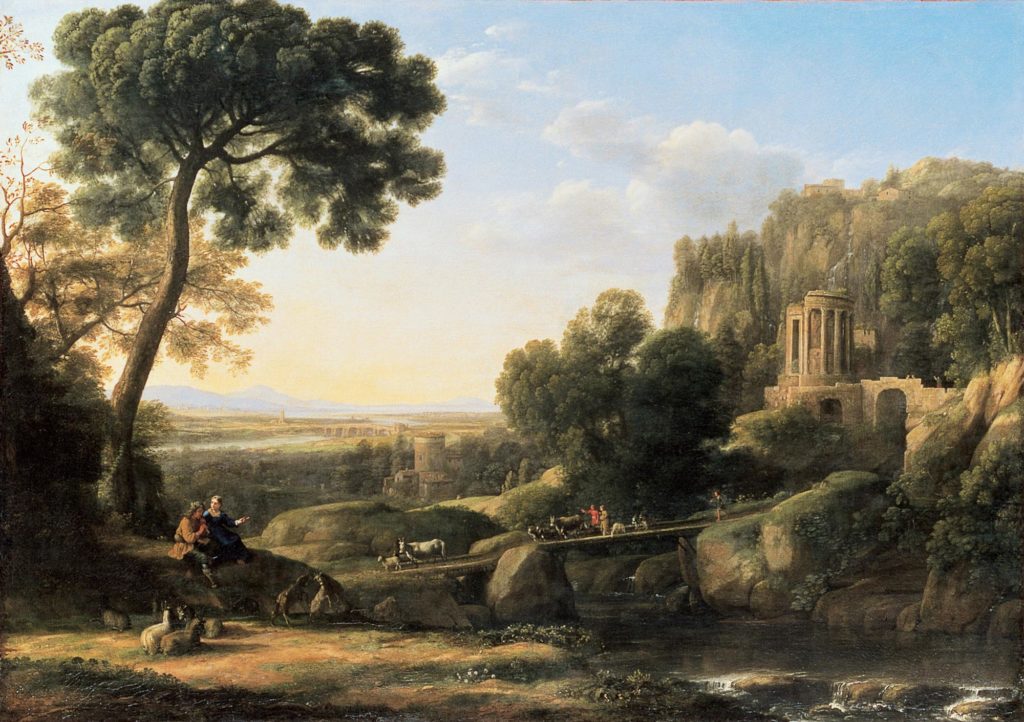
Oil on canvas, 98 x 137 cm
Musée des Beaux-Arts de Grenoble
Racliffe was admired by many writers of the UK and in the continent. The Brontë sisters, Edgar Allan Poe and Bram Stoker emulated her style. Some of her manuscripts and correspondance are kept in the British Library (London). The institution enhanced Racliffe’s role in the development of Gothic fiction through the exhibition “Terror and Wonder” held in 2014: www.bl.uk/romantics-and-victorians/articles/an-introduction-to-ann-radcliffe.

